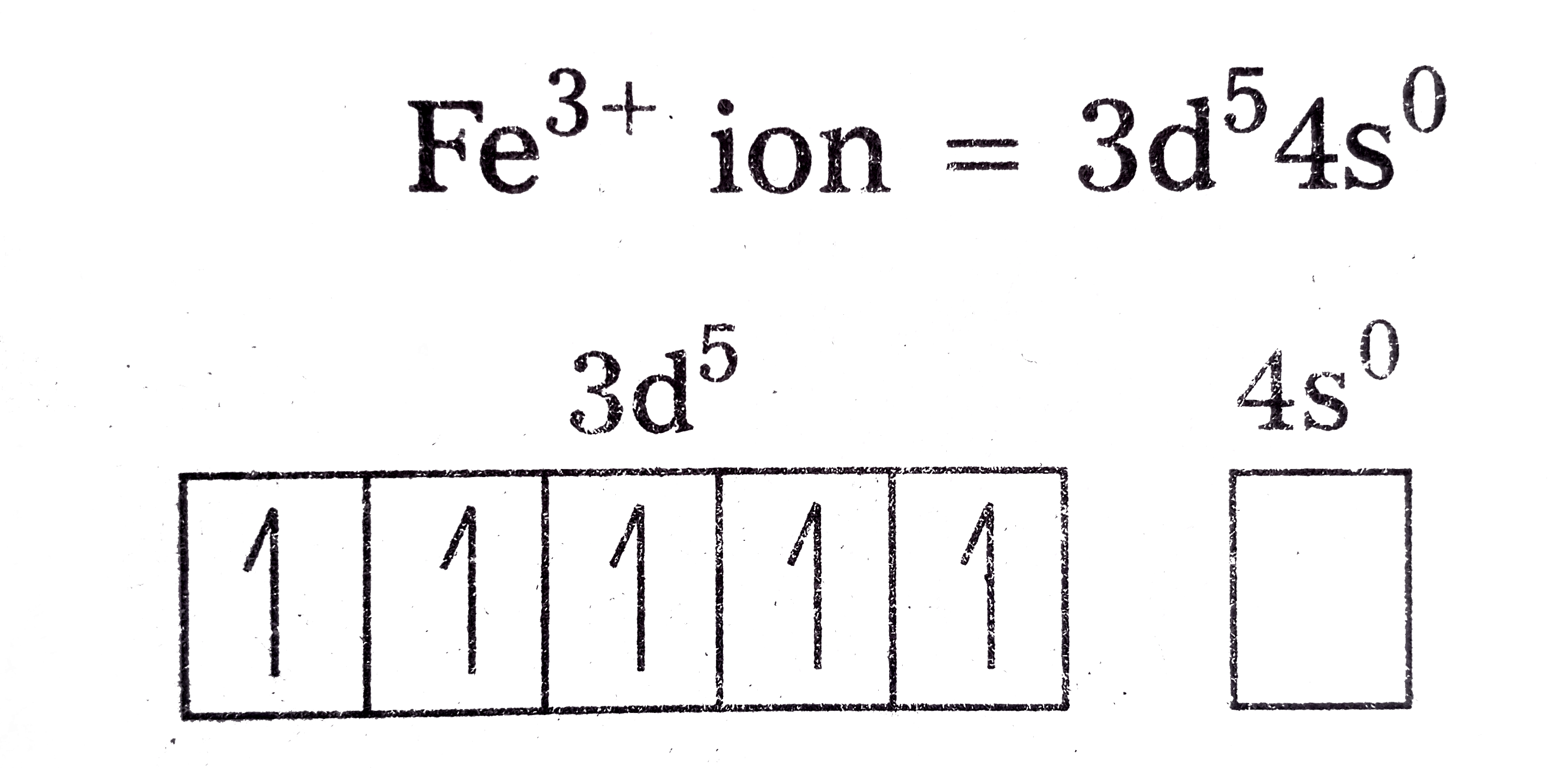[Fe(H2O)6]3+ is strongly paramagnetic whereas [Fe(CN)6]3− is weakly paramagnetic Explain.Solution in Telugu
Outer configuration of 26Fe=3d64s2. In both the complex Fe is present as Fe3+ ion.

In the presence of CN− (a strong field ligand) the 3d-electrons pair up leaving only one unpaired electron. The hybridization is d2sp3 forming an inner orbital complex.

In the presence of H2O, (a weak field ligand), 3d-electrons do not pair up. The hybridization is sp3d2 forming an outer orbital complex containing five unpaired electrons. Hence, it is strongly paramagnetic.

Topper's Solved these Questions
- BOOK - VIKRAM PUBLICATION ( ANDHRA PUBLICATION)CHAPTER - D AND F- BLOCK ELEMENTS AND CO-ORDINATION COMPOUNDS EXERCISE - LONG ANSWER QUESTIONS23videos
D AND F- BLOCK ELEMENTS AND CO-ORDINATION COMPOUNDS
- BOOK - VIKRAM PUBLICATION ( ANDHRA PUBLICATION)CHAPTER - CHEMISTRY IN EVERYDAY LIFEEXERCISE - Intex questions5videos
CHEMISTRY IN EVERYDAY LIFE
- BOOK - VIKRAM PUBLICATION ( ANDHRA PUBLICATION)CHAPTER - ELECTROCHEMISTRY & CHEMICAL KINETICSEXERCISE - DAM SURE18videos
ELECTROCHEMISTRY & CHEMICAL KINETICS
Similar Questions
Explain giving reasons :
Transition metals and many of their compounds show paramagnetic behaviour.04:10View SolutionSleeping pills are recommended by doctors to the patients suffering from sleeplessness but is not advisable to take its doses without consultation with the doctor.Why?
Consider the effect of tranquilizers or antidepressants on the nervous system.View SolutionDiffine conductivity of a material. Give its SI units.
05:15View Solution[Fe(H_2O)_6]^(3+) is strongly paramagnetic whereas [Fe(CN)_6]^(3-) is weakly paramagnetic. Explain.
11:56View Solution[Fe(H2O)6]3+ प्रबल अनुचुम्बकीय है जबकि [Fe(CN)6]3− दुर्बल अनुचुम्बकीय । समझाइए ।
04:10View Solution[Fe(H2O)6]3+ प्रबल अनुचुम्बकीय है, जबकि [Fe(CN)6]3− दुर्बल अनुचुम्बकीय है,
व्याख्या कीजिए |08:20View Solution[Fe(H2O)6]3+ प्रबल अनुचुम्बकीय हैं जबकि [Fe(CN)6]3− दुर्बल अनुचुम्बकीय समझाइये।
12:28View Solution[Fe(H_(2)O)_(6)]^(3+) is strongly paramagnetic whereas [Fe(CN)_(6)]^(3-) is weakly paramagnetic. Explain.
View Solution[Fe(H2O)6]3+ प्रबल अनुचुंबकिय है, जबकि [Fe(CN)6]3− दुर्लब अनुचुकिय है, व्याख्या कीजिए ।
View Solution[Fe(H_(2)O)_(6)]^(3+) is strongly paramagnetic whereas [Fe(CN)_(6)]^(3-) is weakly paramagnetic. Explain.
View Solution[Fe(H2O)6]3+ प्रबल अनुचुंबकिय है जबकि [Fe(CN)6]3− दुर्बल अनुचुंबकिय। समझाइये।
View Solution[Fe(H2O)6]3+ is strongly paramagnetic whereas [Fe(CN)6]3− is weakly paramagnetic . Explain.
View Solution[Fe(H2O6]3+ is strongly paramagnetic whereas [Fe(CN)6]3− is weakly paramagnetic. Explain.
03:25View Solution[Fe(H_(2)O)_(6)]^(3+) is strongly paramagnetic whereas [Fe(CN)_(6)]^(3-) is weakly paramagnetic. Explain.
05:59View SolutionExplain the following :
[Fe(H2O)6]3+ is more paramagnetic than [Fe(CN)6]3−.04:57View Solution

